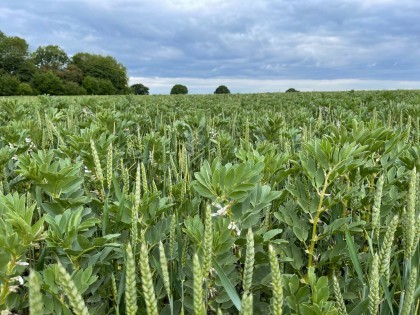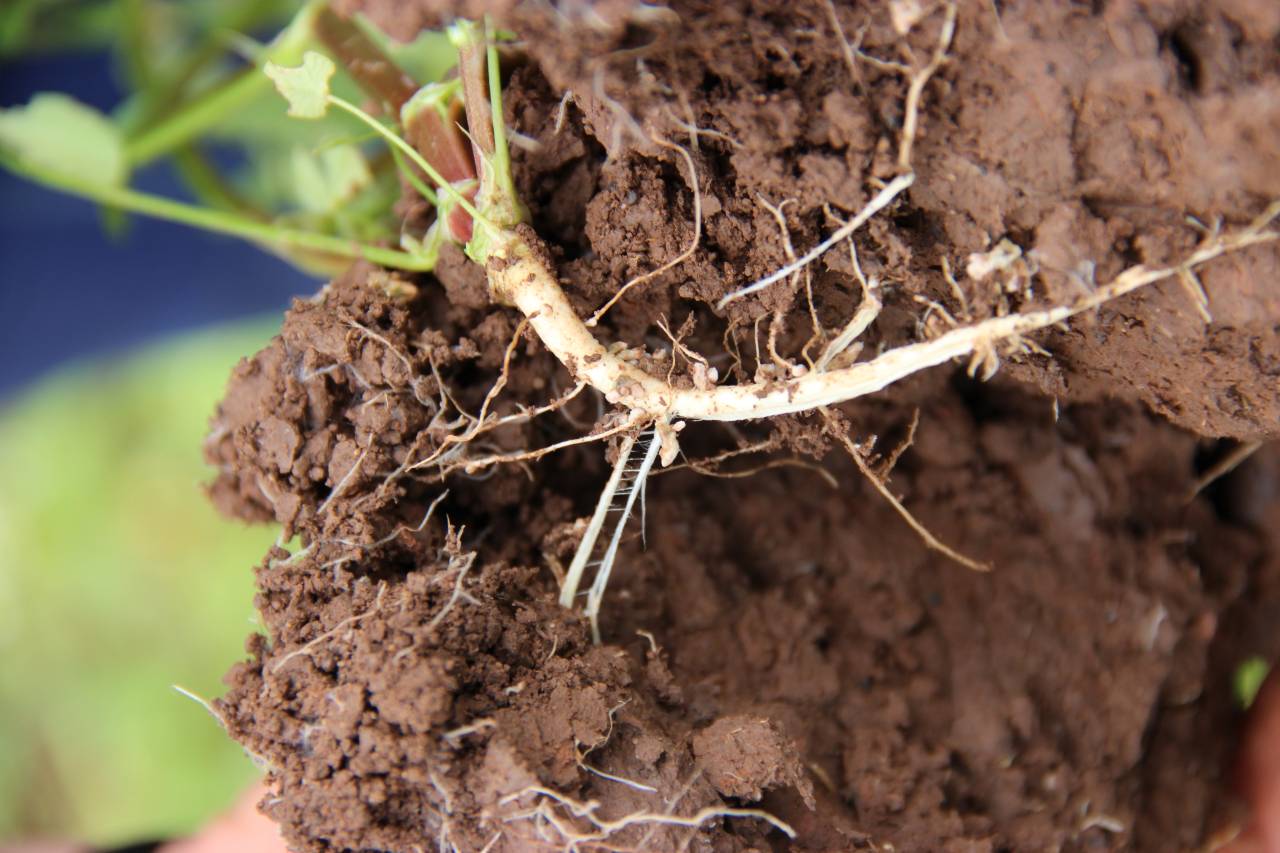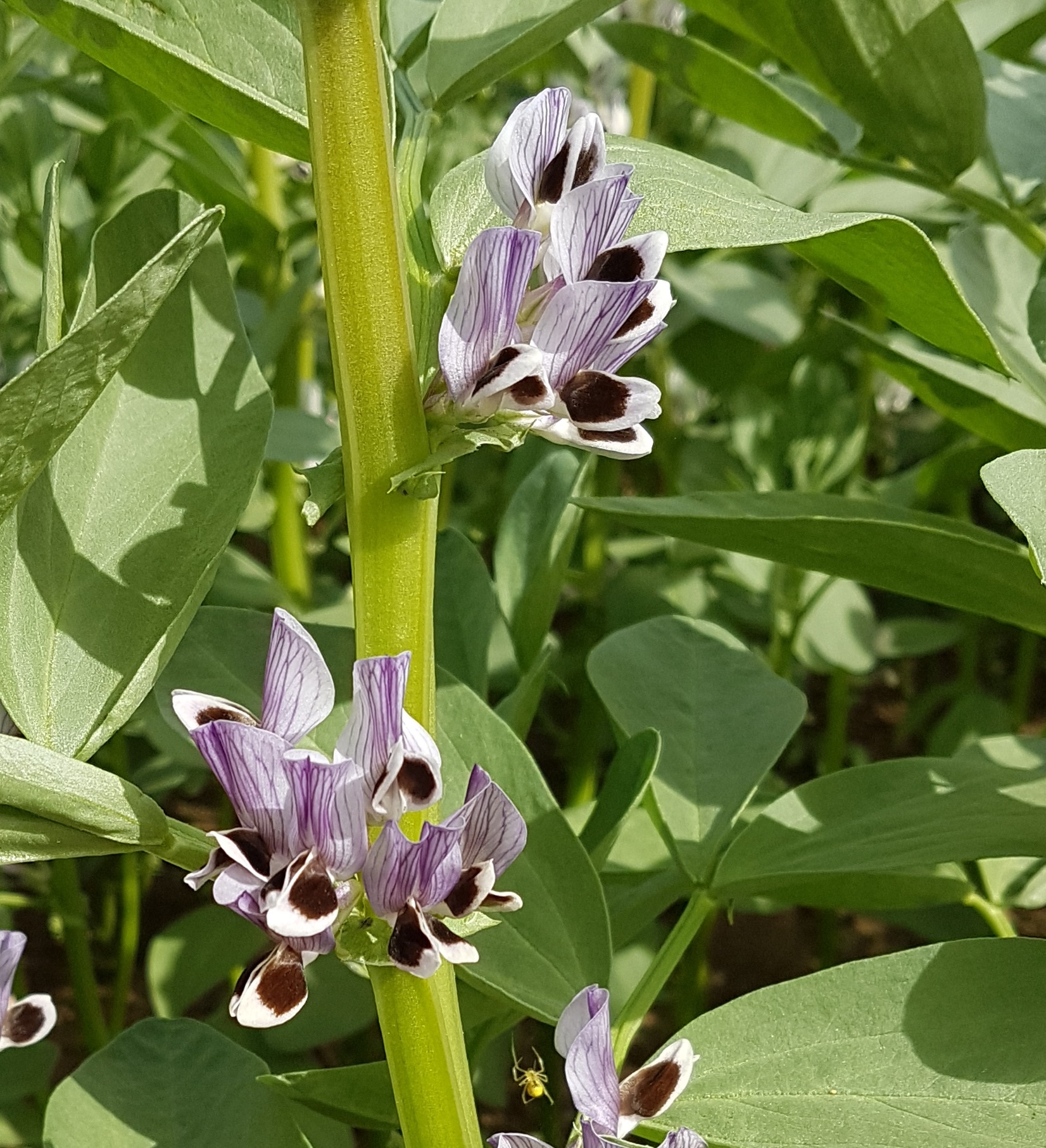
Last December we welcomed at our headquarters in Cambridge a group of farmers representing MAIZALL. This is an alliance of growers from Argentina, Brazil and the United States – the three largest exporters of maize in the Americas. They described how advances in genetics and agronomy in the past 20 years have helped farmers in the group to increase yields per hectare, reduce the use of plant protection products and in this way conserve biodiversity of the soil and the environment.
MAIZALL growers avoid tilling the soil, resulting in fewer field passes and operations with machinery, leading to reductions in fuel use which impacts both cost and CO2 emissions. These are family businesses, and for these growers soil health is a priority as they look to futureproof their land for generations to come. As they made it clear, they make use of every tool in the toolbox.
(Image: winter wheat and field beans bi-cropping. Image by John Pawsey)
Regenerative farming is used to describe integrated approaches to agriculture with a focus on improving soil health. At NIAB, we have worked on such approaches for more than 15 years, and the latest edition of Landmark, the NIAB magazine, highlights some of that research and advice.
Although we are agnostic about how they are labelled, our research is designed to support informed decisions for all growers looking at enhancing soil health, whilst raising productivity and promoting ecosystem services such as biodiversity.
NIAB’s role is to provide independent, science-based evidence to help evaluate practices and products. We learn from experiments that are designed robustly, and from both successes and failures.
Complexity
The soil is a very complex system, and we are only just beginning to understand how to manage it optimally for the future. A handful of soil contains millions of organisms, from viruses to bacteria to fungi, that compete and co-exist with a large number of invertebrates. Recent advances in molecular biology have expanded our ability to measure and characterise the species we find in the soil which is only the first step to be able to assess and compare soil health.
 Soils are also highly variable; properties such as organic matter content, available nutrients and pH exhibit a wide range, at times even within a single farm. Therefore, an effective approach to preserving and improving soil health will need to be locally-adapted, making use of all the tools and technologies available to us.
Soils are also highly variable; properties such as organic matter content, available nutrients and pH exhibit a wide range, at times even within a single farm. Therefore, an effective approach to preserving and improving soil health will need to be locally-adapted, making use of all the tools and technologies available to us.
We should consider, for instance, the potential for novel crop varieties generated using cutting-edge breeding technologies. Developing crops that utilise nutrients more efficiently or that can use less water will be key to bringing regenerative farming at scale to address the challenge of food insecurity whilst protecting the soil and other ecosystem services. If the aim is to promote more efficient and precise production while maintaining a healthy soil, regenerative farming cannot exclude the use of new breeding technologies, on the contrary!
In the on-farm research programmes at NIAB, we also study the use of our land and the impact that agriculture has on the environment. One example is the work we carry out on tillage practices to improve sustainability and reduce soil carbon losses as greenhouse gases. We investigate solutions that will keep the soil surface covered as much as possible by integrating catch, cover and intercrops within the rotation. We have examples of projects in this space on different soils and looking at different farming systems.
Legumes
There are also opportunities to widen the options for current rotations. As we look to reduce the inputs from fertilisers, and also to increase plant proteins in our diets, we should consider the development of varieties of nitrogen-fixing legumes such as soybean and lentils that could be adapted to northern European conditions.
 We should prioritise growing the UK’s capabilities in the area of legume genetics, building upon a strong base of research and germplasm resources.
We should prioritise growing the UK’s capabilities in the area of legume genetics, building upon a strong base of research and germplasm resources.
More broadly, approaches that combine biotechnology, genomic prediction, data science, crop breeding and agronomic expertise will be needed to design, implement and deploy crop improvement programmes at speed and scale.
The new Precision Breeding Bill currently going through Parliament will provide a more straightforward route to market in England for seeds and crops developed using advanced breeding technologies such as gene editing.
The advent of agriculture 10,000 years ago was the most important development in human history upon which societies have flourished. Although originally edible plants were not suitable to feed a growing population, through the development of breeding we managed to domesticate them to increase yields and improve their nutrition.
The same principle applies to soil health and the need to optimise farming systems for carbon capture. We should firmly reject the voices making sweeping statements about the incompatibility of productive agriculture, biotechnology and regenerative farming.
A science-led approach to assess the value of regenerative farming approaches will be the only way to ensure we can continue to feed the world whilst protecting soil health and the environment.
As the MAIZALL growers do, let us use all the tools at our disposal.
This blog post originally appeared in the Autumn 2022 edition of Landmark, NIAB’s magazine, and is written by NIAB CEO Mario Caccamo. Sign up for free and you can get Landmark delivered to your door or sent straight to your inbox:
